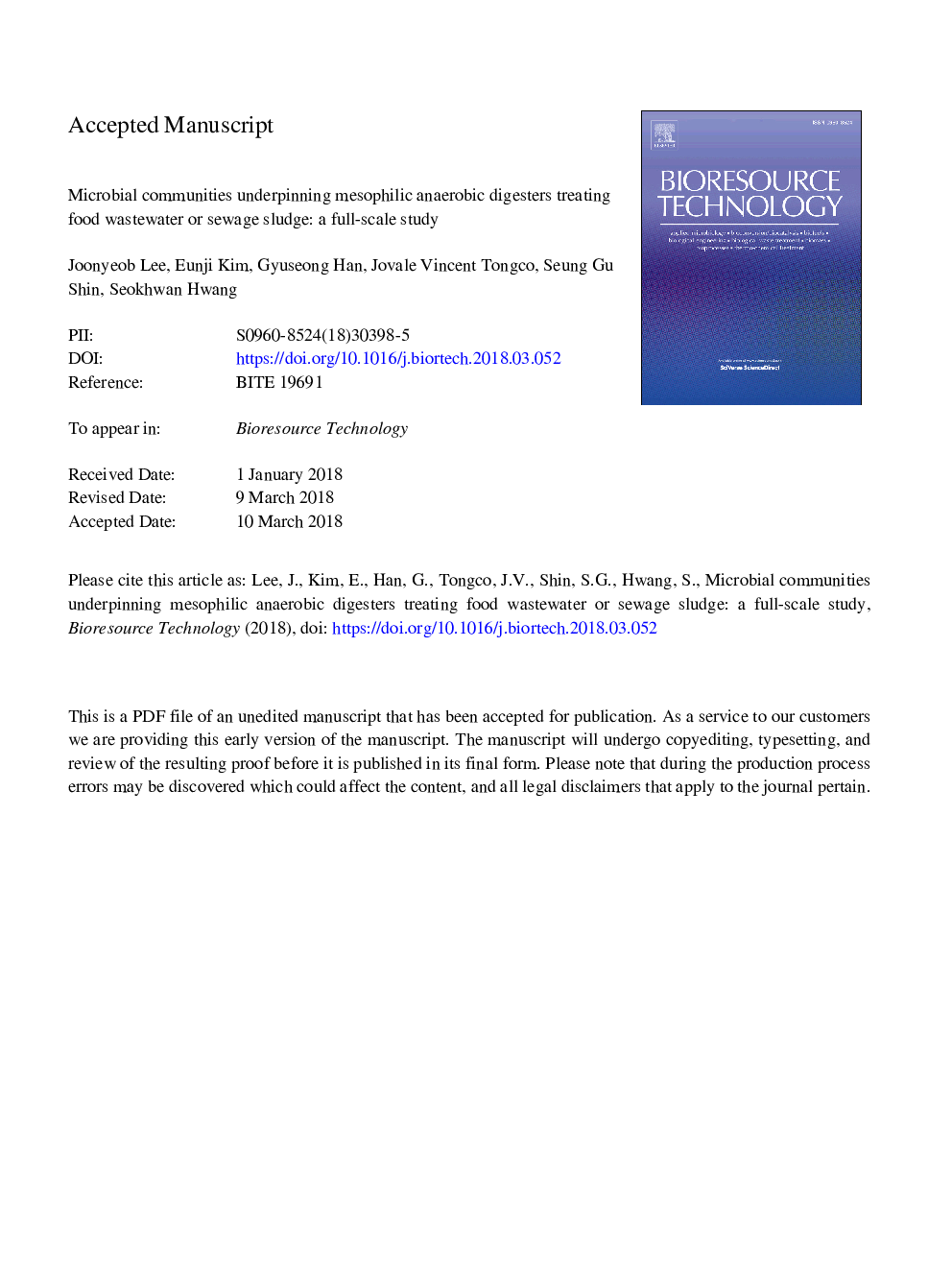| Article ID | Journal | Published Year | Pages | File Type |
|---|---|---|---|---|
| 7067332 | Bioresource Technology | 2018 | 25 Pages |
Abstract
Ten mesophilic full-scale anaerobic digesters treating food wastewater (FW-digesters) or sewage sludge (SL-digesters) were monitored for 1â¯year to investigate: (1) microbial communities underpinning FW-digesters and SL-digesters, (2) the effects of total ammonia-nitrogen concentration [TAN] and Na+ concentration [Na+] on variations of these communities. [TAN] and [Na+] in the digester varied among digesters: 1.7-6.5â¯g TAN/L and 1.0-3.6â¯g Na+/L for the FW-digesters, and 0.1-2.2â¯g TAN/L and 0.1-1.2â¯g Na+/L for the SL-digesters; [TAN] negatively correlated with the process efficiency of the FW-digesters. Microbial communities were less diverse in the FW-digesters than in the SL-digesters. The FW- and SL-digesters formed very distinct microbial community structures; [TAN] and [Na+] in the digester were the critical factors shaping these structures. Immigrant bacteria from influent sludge significantly influence the bacterial communities of the SL-digesters. Methanoculleus might be tolerant to high ammonia in AD of such organic wastewater.
Related Topics
Physical Sciences and Engineering
Chemical Engineering
Process Chemistry and Technology
Authors
Joonyeob Lee, Eunji Kim, Gyuseong Han, Jovale Vincent Tongco, Seung Gu Shin, Seokhwan Hwang,
